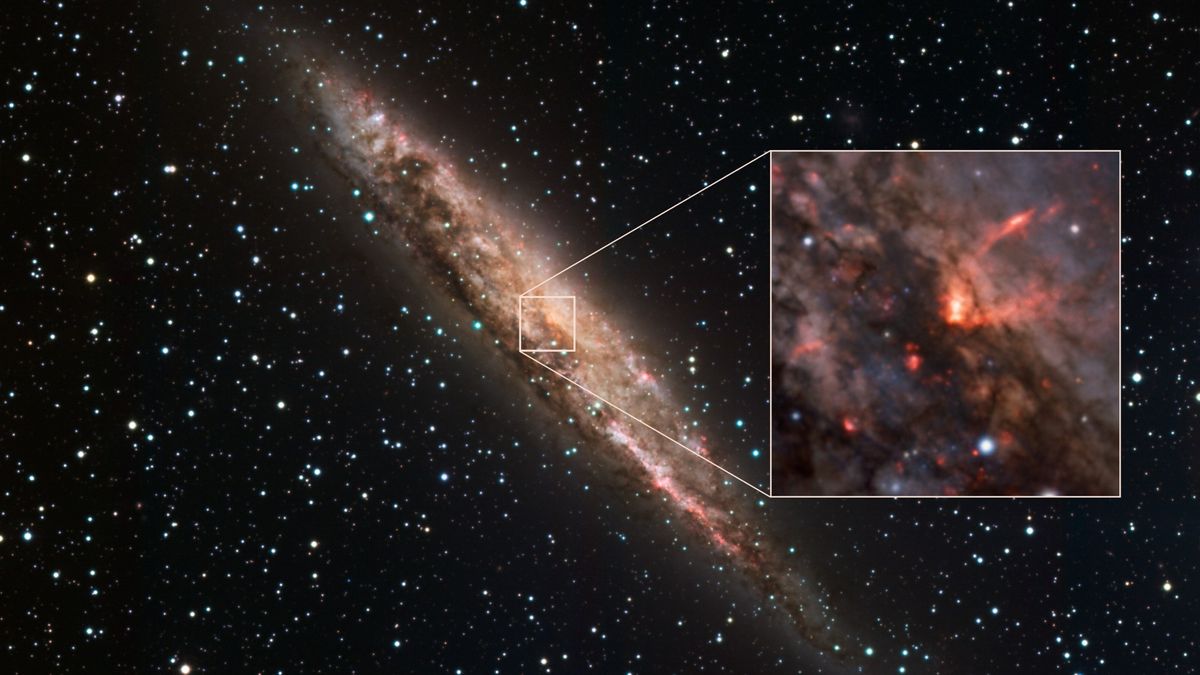Artificial intelligence (AI) fundamentally lacks our human capacity for making creative mental connections, new research has found, and this could be a serious problem if we are to rely on AI-based decision-making in the future.
Plus, in this week’s science news, we’ve learned that AI models will lie to us to achieve their goals. In fact, a new study has found that large language models can be convinced to lie to users when given coercive prompts by trainers.
This week, we’ve also learned that talking to AI models about war and violence makes them more anxious and that using AI may reduce our critical thinking skills.
America is ‘dripping’
Deep beneath the Midwest lies an ancient slab of Earth’s crust, and it’s sucking swaths of North America’s present-day crust down into Earth’s mantle. The pull of this slab has created giant “drips” that hang from the underside of North America to depths of about 400 miles (640 kilometers), according to new research.
The drips are located beneath an area spanning from Michigan to Nebraska and down to Alabama, but their presence appears to be affecting the entire continent.
Discover more planet Earth news
—Scientists drilled into Belize’s Great Blue Hole and discovered a worrying trend
—Lava bursts through Grindavík’s defense barriers as new volcanic eruption begins on Iceland’s Reykjanes Peninsula
—’We didn’t expect to find such a beautiful, thriving ecosystem’: Hidden world of life discovered beneath Antarctic iceberg
Life’s Little Mysteries

There’s a myth that humans use only 10% of their brains. However, while most of us do use all of our brains, that doesn’t mean we need 100% of our brains to live. People who have survived strokes, traumatic brain injuries and brain surgery can, in some cases, function completely “normally,” highlighting the human brain’s staggering adaptability to damage. So, how much of our brains do we really need to survive?
Sutton Hoo mystery solved?

The Sutton Hoo helmet, discovered in 1939, is one of the U.K.’s most iconic archaeological finds. The seventh-century helmet is a curious mix of Northern European and Roman styles, and its origins have been hotly debated.
Now, a discovery in Denmark suggests that the famous artifact may have been crafted in southern Scandinavia, or at least was heavily influenced by the artistic style of that area.
Discover more archaeology news
—3-year-old picks up ‘beautiful stone,’ discovers 3,800-year-old scarab amulet in Israel
—Ancient Egypt: History, dynasties, religion and writing
—Unknown human lineage lived in ‘Green Sahara’ 7,000 years ago, ancient DNA reveals
Also in science news this week
—’Be ready to move quickly to higher ground’: Forecaster delivers ominous warning of 1-in-1,000-year flood coming for central US
—’Twins! She has another baby’: Sea monster from Chile had 2 buns in the oven, rare fossil reveals
—Your brain starts eating itself during a marathon, study finds
—Gaia telescope retires: Scientists bid farewell to ‘the discovery machine of the decade’ that mapped 2 billion Milky Way stars
Science Spotlight

We are edging ever closer to a new age of quantum computing. Computers that harness the laws of quantum mechanics will perform calculations exponentially faster than the classical computers we have today. The technology has the potential to solve complex problems that have puzzled scientists for decades, but it could also cause significant problems for cybersecurity.
When quantum computers are first rolled out, most of us will still rely on classical computers and classical ways of encrypting sensitive information. Cracking this encryption is near impossible on a classical computer, but quantum computers may find it trivially easy, making everything from banking passwords to military secrets vulnerable to hackers.
Can we find new ways to keep our data secure?
Something for the weekend
If you’re looking for something a little longer to read over the weekend, here are some of the best long reads, book excerpts and interviews published this week.
—Mathematicians solve vexing ‘crowd problem’ that explains why public spaces devolve into chaos
—The history of cat domestication
—World’s largest atom smasher makes 1st-of-its-kind ‘beauty’ particle discovery that could unlock new physics
Science in pictures

At the heart of the Helix Nebula lies the remains of a dying star located 650 light-years from Earth. The star is gradually shedding its outer gas layers into the space that surrounds it, while stellar radiation causes this gas to glow like a giant ring. However, NASA’s Chandra X-ray Observatory has detected some peculiar X-ray emissions from the region. Scientists think these strange emissions may be the remnants of a celestial murder scene, indicating that the dying star may have gobbled up an orbiting planet that flew too close to its dying sun.
Want more science news? Follow our Live Science WhatsApp Channel for the latest discoveries as they happen. It’s the best way to get our expert reporting on the go, but if you don’t use WhatsApp we’re also on Facebook, X (formerly Twitter), Flipboard, Instagram, TikTok, Bluesky and LinkedIn.














